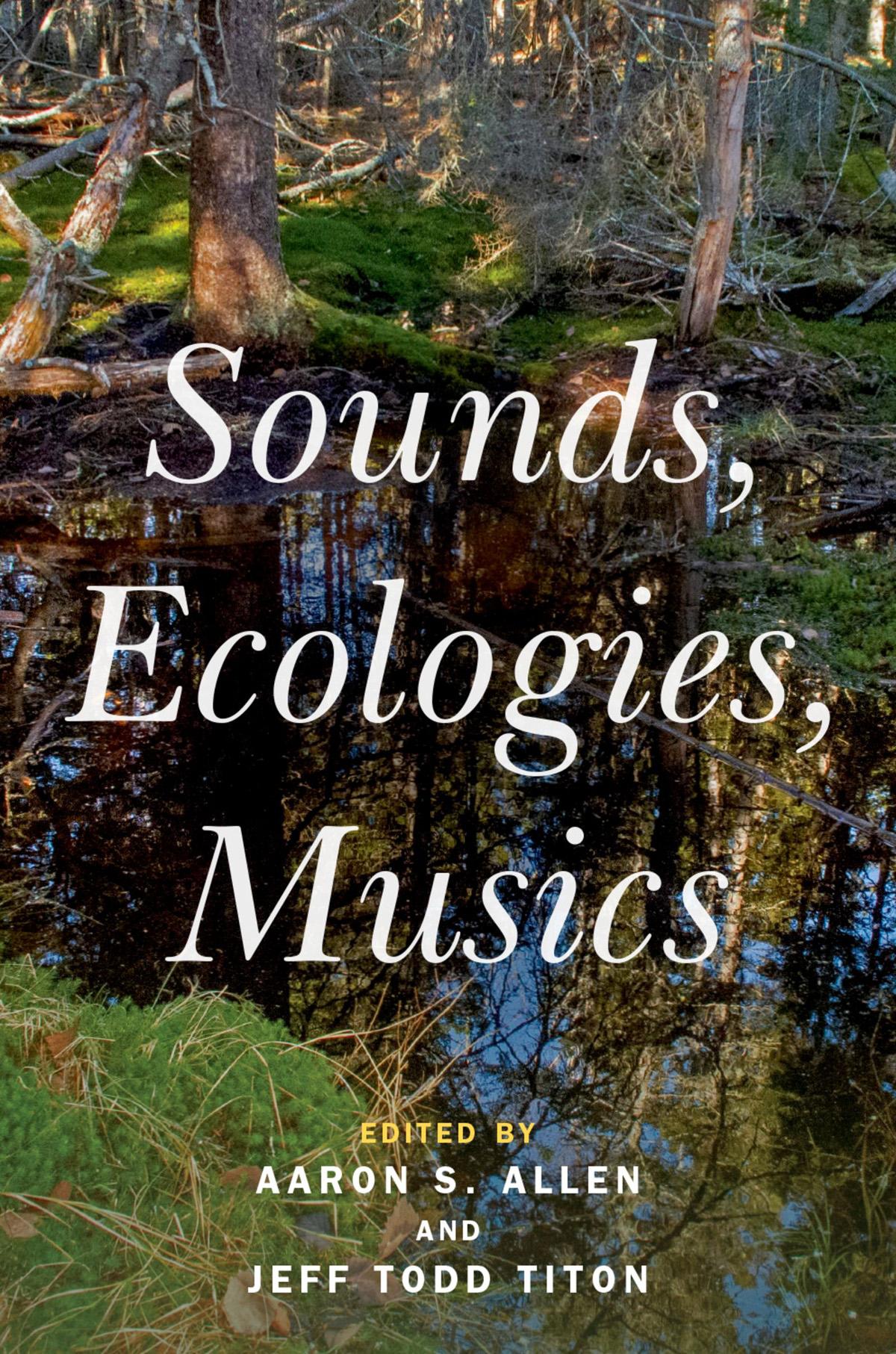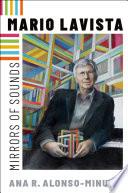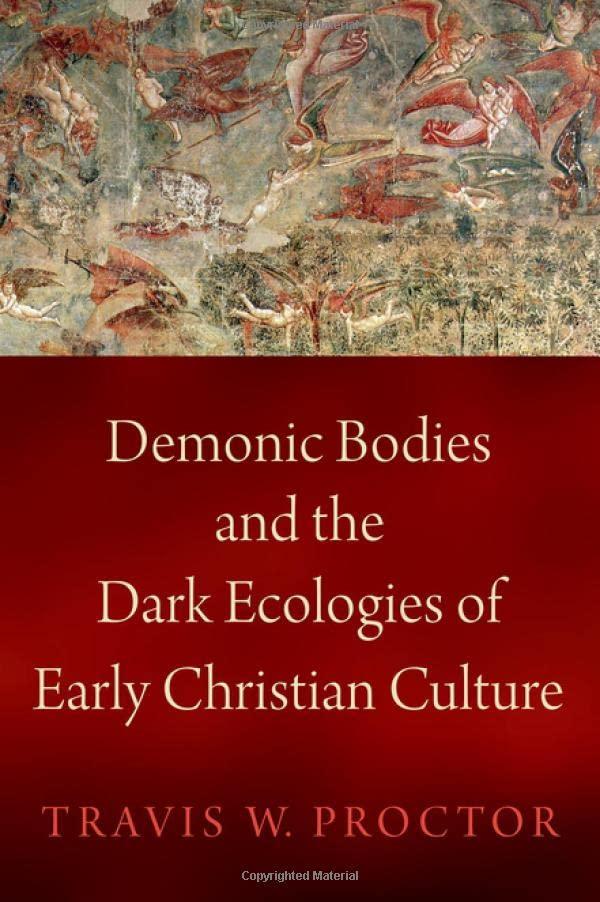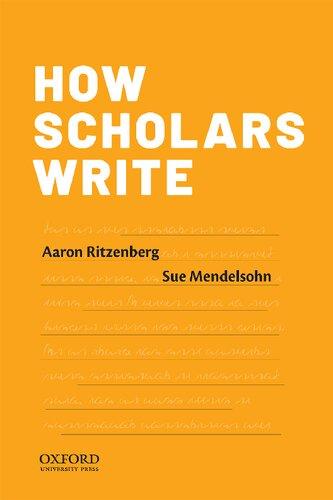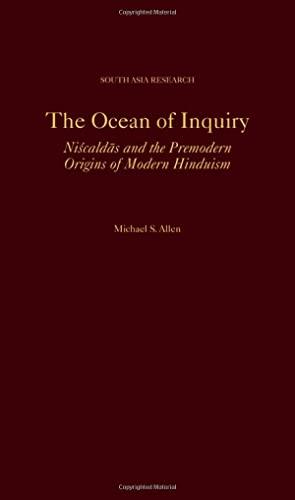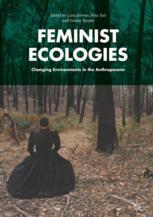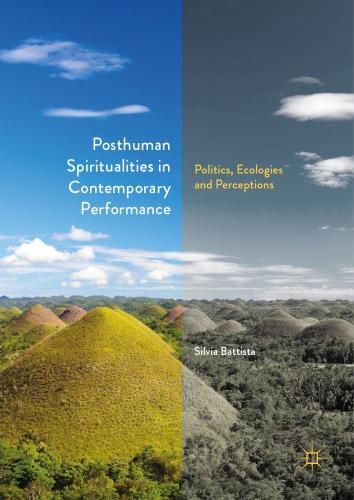Sounds, Ecologies, Musics
Editedby Aaron S. Allen and Jeff Todd Titon
Oxford University Press is a department of the University of Oxford. It furthers the University’s objective of excellence in research, scholarship, and education by publishing worldwide. Oxford is a registered trade mark of Oxford University Press in the UK and certain other countries.
Published in the United States of America by Oxford University Press 198 Madison Avenue, New York, NY 10016, United States of America.
© Oxford University Press 2023
All rights reserved. No part of this publication may be reproduced, stored in a retrieval system, or transmitted, in any form or by any means, without the prior permission in writing of Oxford University Press, or as expressly permitted by law, by license, or under terms agreed with the appropriate reproduction rights organization. Inquiries concerning reproduction outside the scope of the above should be sent to the Rights Department, Oxford University Press, at the address above.
You must not circulate this work in any other form and you must impose this same condition on any acquirer.
CIP data is on file at the Library of Congress
ISBN 978–0–19–754665–9 (pbk.)
ISBN 978–0–19–754664–2 (hbk.)
ISBN 978–0–19–754667–3 (epub.)
DOI: 10.1093/oso/9780197546642.001.0001
Cover photograph by Jeff Todd Titon
Contents
ListofEditorsandContributors
AbouttheCompanionWebsite
1. Diverse Ecologies for Sound and Music Studies
AaronS.AllenandJeffToddTiton
PART I: MUSIC, SOUND, ECOLOGIES, AND THE NATURAL ENVIRONMENT
2. Ecoörganology: Toward the Ecological Study of Musical Instruments
AaronS.Allen
3. “Like the Growth Rings of a Tree”: A Socio-ecological Systems Model of Past and Envisioned Musical Change in Okinawa, Japan
JamesEdwardsandJunkoKonishi
4. Bat City Limits: Music in the Human-Animal
Borderlands
JulianneGraper
5. Music, Ecology, and Atmosphere: Environmental Feelings and Sociocultural Crisis in Contemporary Finnish Classical Music
JuhaTorvinenandSusannaVälimäki
PART II: MUSIC, SOUND, AND TRADITIONAL/INDIGENOUS ECOLOGICAL KNOWLEDGES
6. Haiti, Singing for the Land, Sea, and Sky: Cultivating Ecological Metaphysics and Environmental Awareness through Music
RebeccaDirksen
7. Coyote Made the Rivers: Indigenous Ecology and the Sacred Continuum in the Interior Northwest
ChadS.Hamill/čnaq’ymi
8. Resilient Sounds: Rakiura Stewart Island, Aotearoa
New Zealand
JenniferC.Post
9. Relational Capacities, Musical Ecologies: Judith Shatin’s
IceBecomesWater
DeniseVonGlahn
PART III: MUSIC, SOUND, AND ECOLOGIES IN INTERDISCIPLINARY PERSPECTIVE
10. Biologists, Musicians, and the Ecology of Variation
RobertLabaree
11. Recomposing the Sound Commons: The Southern Resident Killer Whales of the Salish Sea
MarkPedelty
12. The Audible Anthropocene: Sustainable Bridging of Arts, Humanities, and Sciences Scholarship through Sound
JohnE.Quinn,MicheleSpeitz,OmarCarmenates,andMatthew Burtner
13. “Things fall apart; the centre cannot hold”: Impacts of Human Conflict on Musispheres
HuibSchippersandGillianHowell
14. Eco-Trope or Eco-Tripe?: Music Ecology Today
JeffToddTiton
Index
Editors and Contributors
Editors
Aaron S. Allen is director of the Environment and Sustainability Program and associate professor of musicology at UNC Greensboro. He earned a PhD from Harvard University and a BA in music and BS in ecological studies from Tulane University. He coedited Current Directions in Ecomusicology (Routledge, 2016), which received the 2018 Ellen Koskoff Edited Volume Prize from the Society for Ethnomusicology.
Jeff Todd Titon is professor of music, emeritus at Brown University, where he was director of the PhD program in ethnomusicology. A former editor of Ethnomusicology, the journal of the Society for Ethnomusicology, his most recent book is Toward a SoundEcology: NewandSelectedEssays(Indiana University Press, 2020).
Contributors
Matthew Burtner (www.matthewburtner.com) is a composer, sound artist, and ecoacoustician from Alaska, Eleanor Shea Professor of Music at the University of Virginia, co-director of the Coastal Futures Conservatory, and founder of EcoSono™.
Omar Carmenates is the Charles Ezra Daniel Professor of Music at Furman University, where he also serves as the founder and chair of the Council for Equity and Inclusion in Music. Under his direction, the Furman University Percussion Ensemble was named a winner of the prestigious 2022 Percussive Arts Society International Percussion Ensemble Competition and has given presentations and
performances of ecoacoustic music at interdisciplinary conferences throughout the country.
Rebecca Dirksen is Laura Boulton professor of ethnomusicology and associate professor at Indiana University, Bloomington, and the author of After theDance, the Drums Are Heavy: Carnival, Politics, andMusicalEngagementinHaiti(Oxford University Press, 2020) and coeditor of Performing Environmentalisms: Expressive Culture and EcologicalChange (University of Illinois Press, 2021). Dirksen is cofounder and current director of the Diverse Environmentalisms Research Team (DERT).
James Edwards is a senior researcher at SINUS Markt- und Sozialforschung in Berlin. He is a co-principal investigator on several transnational projects, including on the topic of environmental, social, and governance sustainability in European music ecosystems.
Julianne Graper is an assistant professor of ethnomusicology at Indiana University, Bloomington, whose research focuses on sound and bat-human relationality in Austin, TX. Her translation of The SweetPenanceofMusic(2020) won the Robert M. Stevenson award from the American Musicological Society.
Chad S. Hamill/čnaq’ymi is professor of applied Indigenous studies at Northern Arizona University and is executive director of Indigenous arts and expression at California Institute of the Arts. He is the author of Songs ofPower andPrayer intheColumbiaPlateau (Oregon State University Press, 2012).
Gillian Howell is a Dean’s Research Fellow at the Faculty of Fine Arts and Music, University of Melbourne, where she leads a portfolio of research investigating the contributions of participatory music and arts to postwar peace and reconciliation.
Junko Konishi is a professor in the Faculty of Music at Okinawa Prefectural University of Arts, Japan; president of the Japan Musical Expression Society; and vice president of the Japan Society of Island Studies. Her research areas are the islands of Micronesia, Ogasawara, and Okinawa.
Robert Labaree is an ethnomusicologist and performer specializing in Turkish music, with writings on improvisation, music and biology, and Ottoman-European musical interaction. He is a professor, emeritus, in the Department of Musicology at the New England Conservatory, and founder of the Conservatory’s Intercultural Institute.
Mark Pedelty is professor of communication studies and fellow at the Institute on the Environment at the University of Minnesota, and the author of A Song to Save the Salish Sea (Indiana University Press, 2016).
Jennifer C. Post is a member of the music faculty at the University of Arizona. Her most recent book is the coedited volume Mongolian SoundWorlds(University of Illinois Press, 2022).
John E. Quinn is associate professor of biology and director of the CHESS lab at Furman University. As the author or coauthor of dozens of scientific papers, his research addresses the conservation of biodiversity in managed and novel ecosystems.
Huib Schippers, formerly director of Queensland Conservatorium Research Centre and of Smithsonian Folkways Recordings, is coeditor of two important volumes on cultural sustainability Sustainable Futures for Music Cultures (Oxford University Press, 2016) and Music, Communities, Sustainability (Oxford University Press, 2022), and is a senior consultant to academic and arts organizations.
Michele Speitz is associate professor of English literature at Furman University, where she is the founding director of the Furman Humanities Center. She is editor of Romantic Circles Electronic Editions and has published widely on Romantic poetry and technology.
Juha Torvinen is senior lecturer in musicology in the Department of Philosophy, History, and Art Studies at the University of Helsinki. He is coeditor of MusicasAtmosphere(Routledge, 2020).
Susanna Välimäki is associate professor of art research and head of musicology in the Department of Philosophy, History, and Art Studies at the University of Helsinki.
Denise Von Glahn is professor of musicology at Florida State University. Her most recent book is Circle of Winners: How the Guggenheim Foundation Shaped American Musical Culture (University of Illinois Press, 2023). Her 2003 book The Sounds of Placeappeared in a new edition in 2021 (University of Illinois Press).
Diverse Ecologies for Sound and Music Studies
AaronS.AllenandJeffToddTiton
What does it mean to think ecologically about music and sound? How do beings relate ecologically by means of music and sound? What is ecological action regarding sound and music? How and why do ecologies contribute to studies of sound and music? In this book, nineteen authors illuminate challenges posed and opportunities offered when we consider sound and music from ecological perspectives as well as ecologies from sonic standpoints. Hence our title: Sounds,Ecologies,Musics.
Scholars and practitioners approached music and sound ecologically long before it appeared as a named and definable field of study: ecomusicology. Ethnomusicologists and anthropologists drew on ecological thought and environmental consciousness to inspire efforts in music ecology (e.g., Archer 1964; Neuman 1980; Feld [1982] 2012; Titon 1984, 9; Titon [1988] 2018; Seeger [1987] 2004; Roseman 1993). And musicologists, composers, bioacousticians, and related scholars and practitioners have similarly drawn on ideas of nature, ecology, and environmentalism to inform historical and contemporary studies of music and sound (e.g., Gardiner [1832] 2009; Troup 1972; Schafer [1977] 1994; Cage and Charles 1981; Krause 1998; Morris 1998; Clark and Rehding 2001; Rothenberg and Ulvaeus 2001; Mellers 2001; Rehding 2002). Nevertheless, it was only during the deepening environmental crisis of the twenty-first century a period of increasing global heating and climate chaos, accelerated habitat loss and species extinctions, and expansive pollution and health impacts, all with dire warnings about the future—that those efforts and others coalesced into the new,
named, and theorized field of ecomusicology (see Pedelty et al. 2022). Allen and Dawe (2016, 2) offer the following concise definition: “Ecomusicology is the coming together of music/sound studies with environmental/ecological studies and sciences.” Resulting from a collaborative community process to develop clarity for the emerging field, Allen (2013) defined ecomusicology as “the study of music, culture, and nature in all the complexities of those terms,” which Titon ([2013] 2020, 224) elaborated as “the study of music, culture, sound and nature in a period of environmental crisis.” What is the place, and the role, of music and sound in this crisis of the so-called Anthropocene? Might ecological thinking about music and sound help us to understand, mitigate, and adapt to this crisis?
Beginning especially in the second decade of the twenty-first century, a steady stream of scholarship has addressed these questions. Ecomusicology attracts scientists, humanities scholars, environmental activists, composers, and musicians to its publications and gatherings. The majority come from musicology and ethnomusicology, particularly via the special interest groups in the American Musicological Society and the Society for Ethnomusicology. There is as yet no “Society for Ecomusicology,” and there may never be. Many in this field prefer a more informal network, with occasional conferences, symposia, and other special events, to yet one more professional organization. This broad consensus represents a preference for ecomusicology as an interdisciplinary field, rather than as a new academic discipline that, needing to establish a single identity, would define a subject area and methodology for itself and, in so doing, would discourage interdisciplinary connections. To ecomusicology, musicology contributes historical, analytical, and literary ecocritical approaches. Ethnomusicology brings comparative methods, interests in the sciences, and a long-standing ethnographic focus on traditional and Indigenous worldviews and lifeways, including what are now called traditional and Indigenous ecological knowledges (TEK and IEK). Ecological science and related fields such as bioacoustics, soundscape ecology, behavioral ecology, conservation biology, and environmental science have also contributed, with ecological
scientists attending ecomusicology conferences, conducting experiments, and publishing research related to music, sound, and the environmental crisis (e.g., Post and Pijanowski 2018; Quinn et al. 2018). Meanwhile, ecomusicologists are drawing on scholarship in fields from the social sciences and humanities that owe a major debt to ecological thought, such as ecological economics, phenomenological ecology, cultural ecology, ecological psychology, the anthropology of sound, political ecology, literary ecocriticism, acoustic ecology, environmental philosophy, social ecology, sound studies, and human ecology, while scholars in those fields and disciplines who have an interest in music and sound are also making important contributions to ecomusicology. The resulting scholarship is vast and distributed in diverse sources, from print publications to conferences to multimedia (for an extensive literature review, see Pedelty et al. 2022).
One upshot of this inter- and cross-disciplinary ferment around music, sound, and the environment is that ecomusicology is more accurate as ecomusicologies, signaling the plurality of approaches (Allen and Dawe 2016, 1–15; Pedelty et al. 2022). And while this area of study has grown more diverse intellectually and practically, it has also become more diffuse (e.g., Titon [2009] 2020, [2012] 2020; Allen and Titon 2018). The prefix eco- in ecomusicology may now refer to ecocriticism, ecology, and/or environment. In other words, it may now entail a methodological approach to music and sound inspired by literary study (ecocriticism) linking human creative production with Earth processes. Ecocriticism, in turn, is a field that is itself informed by TEK, IEK, and ecology, the biological science that considers relationships among organisms and their contexts, that is, the environment. In truth, just as in popular usage, many artists and scholars confuse “ecology” with “environment,” using the former term when they mean the latter. Our aim with this book is in some instances to blur or collapse these distinctions but always to clarify their meanings.
We have organized Sounds,Ecologies,Musics into three parts. In the first, which includes four chapters by six authors, the overriding concern is the natural environment and how, from an ecological
perspective, music and sound are woven into it, how the environment enables music and sound, and how music and sound in turn impact the environment, sometimes positively and sometimes negatively. The four authors in the second part are concerned with music, sound, and ecological knowledges that are outside of, or marginal to, Western science—the place-based, traditional ecological and environmental knowledges (TEK) of certain social groups within larger regional and national units, as well as Indigenous ecological and environmental knowledges (IEK) within Native, tribal, or Indigenous social groups. (The boundaries and definitions of these three categories, Native, traditional and Indigenous, remain under debate today.) The nine authors in the third part all bring multi- and interdisciplinary stances to their five chapters. Several are crossdisciplinary collaborations among two or more scholars and practitioners from different academic fields; the others show the work of individual scholars who work interdisciplinarily in music, sound studies, anthropology, policy, evolutionary biology, literature, and ecological science. Such cross- and interdisciplinarity can be both enriching, regarding connections and understanding, as well as confounding, regarding our choices organizing this book. As in any ecosystem—social, nonhuman, Earth-centered, intellectual, and even within this volume—other organizational possibilities could provide equal (or even improved) models for understanding. We have chosen the present structure because we find it provides for numerous resonances (many of which are signaled, inside each chapter, with cross-references) among the chapters as they are grouped. Yet we have ordered the chapters within each part alphabetically by the first author’s last name, rather than follow any thematic ordering. In this introduction, rather than march through each chapter with an individual summary, we cut across the sections and chapters of the book to make further linkages. We intend these organizational and introductory efforts to help dispel any notion that the structure of the book could be final in its explanatory powers.
Throughout the book we emphasize cross- and interdisciplinary work, particularly in the coauthored chapters. A cross-disciplinary project—in this case, a work of musical art inspired by knowledge
crossings between ornithological ecology and literary history—is embodied in the chapter co-written by Quinn, Speitz, Carmenates, and Burtner. The result was Burtner’s composition, AvianTelemetry, for Carmenates’ percussion ensemble that paired traces of Romantic poets’ descriptions of bird sounds (from Speitz’s ecocritical research) with contemporary field recordings and ecological information about bird vocalizations adapting to human sounds and noise (from Quinn’s ecological fieldwork). The three collaborations between Schippers and Howell, between Edwards and Konishi, and between Torvinen and Välimäki reflect their authors’ interdisciplinarity: cultural policy, musical institutions, and ecological sustainability in the first of the three; conservation ecology, history, economics, and musical instrument manufacture in the second; and philosophy and music history and criticism in the third collaboration. Schippers and Howell employ a cultural systems model to examine harm to musical life in regions where armed conflict has ripped apart societies and environments. Edwards and Konishi examine the music culture of the Ryūkyūan/Okinawan sanshin (a three-stringed lute) in light of an environmental and economic crisis occasioned by unsustainable tonewood sourcing. Torvinen and Välimäki are especially interested in “atmosphere” and affect as felt musical experience; they offer an ecocritical examination of two contemporary Finnish classical music compositions that foreground environmental concerns while advancing atmospherology, a recent type of phenomenological approach in the study of music.
Interdisciplinarity is also central to many of the single-authored chapters. Some, including those by Labaree, Titon, Pedelty, Graper, and Allen, draw on ecological science in their discussions of music and sound. Labaree is attentive to variation and pattern in the development of musical compositions and performances; he proposes that “these complex systemic phenomena in music exhibit the same characteristics of self-organized and emergent phenomena as are found in nature” (this volume 201). Labaree’s chapter makes use of an extensive music eco-trope, that is, an analogy between music and nature; Titon’s chapter responds to a critique of music ecology’s eco-trope. He reviews controversies surrounding self-
organization and emergent properties in nature, distinguishes between ecological science and the philosophy of ecological holism, teases apart balances in nature from the metaphorical “balance of nature,” and elaborates on the concept of ecological rationality. Titon also claims that ecomusicology expands the reach of political activism from the diversity-equity-inclusion agenda of social justice to embrace a yet more diverse and inclusive ecocentric region of ecojustice, a topic that resonates throughout nearly all the other chapters in this book. Pedelty’s chapter exemplifies such ecojusticeoriented environmental-political activism in describing a successful campaign, which he aided by making a documentary film, to restrain the lucrative whale-watching industry in the US Pacific Northwest. The noise of the tourist boats was harming orca whales by making it difficult for them to communicate with one another and find food; thus, limits on these human activities are necessary to allow the orcas to survive. Graper’s chapter engages with the borderlands of multispecies relationships in Austin, Texas, where a large colony of bats has taken up residence under a major bridge and contributed to the musical identities of the city. Here, conservation ecology played a role in shifting conservation narratives that contributed to artistic and cultural identities—also linking in complex ways with the racial disputes along the nearby political borderlands between the United States and Mexico. Allen’s chapter takes up industrial ecology (life cycle analysis) alongside an ecocritical sustainability approach to argue for “ecoörganology,” that is, a critical approach to the material basis of human musical cultures from a perspective that is more ecocentric and less anthropocentric. Allen is drawing on ecological science and politically inspired sustainability activism to advocate an environmentalism regarding musical instruments that considers the places, lifeforms, and people impacted by music cultures—much as ecological science has often been used in the service of more just human-nature relationships.
Edwards and Konishi’s chapter on the sanshin is an ecoörganological analysis in that the instrument is considered in light of biophysical and socioeconomic contexts with a concern about place and nonhuman species. In that sense, Edwards and Konishi
offer yet a third ecoörganological approach, the social-ecological systems (SES) framework, which differs from Allen’s two suggestions. The SES approach is also explicit in the chapter by Post. As another illustration of interdisciplinary activity within ecomusicologies today, SES follows on a history of environmental advocates grounding their proposals in the findings of ecological science. Systems theory in the form of cybernetics influenced E. P. Odum’s influential unification of plant and animal ecological science by means of Arthur Tansley’s ecosystem concept (Odum 1953). In the 1970s and 1980s, E. P. Odum and his brother H. T. Odum extended principles of biophysical ecosystem analysis to socialeconomic systems, such as trade, and technological systems, such as industry, while H. T. Odum was also pioneering in the development of general systems theory (H. T. Odum 1970, 1994). But in the last decades of the twentieth century, when population ecologists were challenging the centrality of the ecosystem approach and gradually reducing its importance in ecological science, an ecosystemic approach was gaining ground in the social sciences, particularly as embodied in the SES framework introduced by Berkes, Folke, and Colding (1998) and later elaborated by Ostrom (2009) and others. It is significant that Berkes (1989) and Ostrom emphasized commons, local knowledge, and community-based management, while in Sacred Ecology Berkes called attention to both IEK and TEK (1999). Although Dirksen does not employ SES explicitly for her chapter on the sacred ecology of Haitian Vodou, the chapter’s focus on IEK nevertheless combines sociocultural local knowledge with the environmental in productive ways. Indeed, combining the sociocultural with the ecological has been key in the literature of music ecology that predates the named field of ecomusicology. SES advocates position their work squarely within the realm of public policy, also a major concern of Titon ([2009] 2020), Schippers and Grant (2016), and Schippers and Howell’s chapter in this volume. Dirksen’s chapter considers how TEK is expressed within Haitian Vodou sacred ecology by means of songs and interactions with the lwa (spirits), proposing that in this context TEK displays human responsibility toward the environment. In his
chapter Hamill writes of Spokane Indigenous ecology, in which “all living things (including those often labeled as inanimate) are … part of a sacred continuum that connected the Spokane, individually and collectively, to seen and unseen worlds around them” (this volume 133). Expressive culture, including stories and song, emanates from the environment and contributes to the “resonant place-worlds” (Basso 1996, 35) that fold the Spokane ancestral past into the present. In her chapter Von Glahn considers the impact of glacierrelated Tlingit IEK, as reported by anthropologists Thomas F. Thornton and Julie Cruikshank, upon Judith Shatin’s contemporary musical composition IceBecomesWater.
Edwards and Konishi’s chapter emphasizes the collective, partnership-based managerial approach to cultural policy while adapting SES concepts of adaptive management and resilience from conservation ecology to music-culture sustainability (see Titon [2015] 2020). Although one aim of the Kuruchi Island Network and its allies is environmental restoration, for the policy to be successful at the government level it must be instrumentalized by means of the long-term “ecosystem services” provided to human beings in the form of sustainable sanshin tonewood. There is a tension between thinking of nature as community, that is, as the place in which humans dwell among other beings, and thinking of nature as capital and commodity, that is, in terms of the contributions—“ecosystem services”—that its goods, such as food, fuel, and natural products, make to human life (see Titon forthcoming). Nowhere is this tension more apparent than in the most recent global assessment reports of the United Nations–sponsored Intergovernmental Science-Policy Platform on Biodiversity and Ecosystem Services (IPBES), where the goal is assessment of “nature’s contribution to people” by means of ecosystem services that range from “strongly utilitarian to strongly relational.” The assessment attempts to consider knowledges from the natural sciences, social sciences, and humanities, but also from the “knowledge of practitioners and indigenous peoples and local communities”—that is, from IEK and TEK (Brondizio et al. 2015, 6). In her chapter Post suggests a way to integrate those Western, university-based knowledges and practices with TEK and IEK. In
welcoming the SES model, Post emphasizes its recent expansion to include expressive culture as she considers soundscapes and sonic practices on Rakiura Stewart Island (Aotearoa New Zealand). Here residents share, develop, and adapt integrated practices in realms that include people, birds, plants, marine life, water, weather events, as well as products of technology such as boats, planes, and other vehicles. Close listening to changing sounds becomes a source for knowledge about conservation needs and part of a narrative network and collective discourse that support conservation measures that blend Māori and European values.
As many Indigenous scholars have pointed out, Romantic portrayals of traditional, tribal, Native, and Indigenous societies as living in timeless harmony with nature overlook entirely the violence wrought upon them by extractive colonial and settler societies. Such problematic portrayals also minimize the practical necessities of surviving in a damaged world. The Earth’s environmental conditions and climate have for many thousands of years been inconstant and mutable. Considering only the past millennium, the “Medieval Warming Period” was followed by the “Little Ice Age” (White 2017). For that reason it makes no sense to think of Indigenous peoples living in a prehistory of harmonious equilibrium with the environment in a “balance of nature” (Ross [1992] 2006). Rather, they developed place-based adaptational strategies to live within the changing climate, varying habitats, and fluctuating populations of plants and animals (Whyte 2018). Thus, TEK and IEK embody practical, problem-solving approaches to living in particular environments, then and now: knowledge of local flora, fauna, foodways, and a homegrown narrative ecology (Hufford 2021), as well as knowledge of machines, electronic media, and navigation within urban landscapes and modern bureaucracies—in addition to understanding and communicating such knowledges sonically and musically. Concomitantly there is the recognition that a particular solution in one place may not be appropriate in another. TEK in Dirksen’s Haiti (this volume) grows out of centuries of knowledge of life in those particular Haitian habitats and is not the same as IEK among Post’s Mongolian herders (Post 2021), which in turn is not the same as in
Post’s Aotearoa New Zealand (this volume) or Hamill’s Spokane (this volume). Moreover, despite local and regional differences, it is still possible to generalize broadly—as Indigenous scientists, scholars, and activists have themselves done—about certain characteristics of TEK and IEK: a foregrounding of relational, holistic thinking, for example, congruent with the concept of ecological rationality mentioned above (Watts 2013; Kanngieser and Todd 2020). The biocentric organicism that plays an important role in both Von Glahn’s chapter, where it aligns with Tlingit understandings of glaciers, and in Labaree’s chapter, where it characterizes new developments in ecological science (eco-evo-devo), suggests the possibility of further rapprochement between IEK and a resurgent holism within ecological science. Yet it must also be noted that many Indigenous writers are deeply skeptical of Western science on the grounds that it was and remains instrumental in settler colonial domination of Native peoples (Deloria 1997; Todd 2017; Whyte 2018). Indeed, as Titon points out (this volume), whereas the environmentalist strain within ecological science has always been characterized by ecological holism, the reductionist strain—what Titon (2022) identifies with “settler ecology”—classifies nature vertically in terms of hierarchical levels (e.g., organisms, populations, communities, ecosystems). In contrast, Indigenous scholars and scientists portray a more horizontally structured nature, characterized by reciprocity, respect, and kin-relationships among all living beings. As Kyle Powys Whyte (Potawatomi) puts it, it is an ecology of “interacting humans [and] nonhuman beings (animals, plants, etc.) that are conceptualized and operate purposefully to facilitate a collective’s (such as an Indigenous people) adaptation to changes” (2018, 133–34).
Whether in the service of Indigenous, scientific, traditional, settler, relational, economically rational, or environmentalist perspectives (among many others), the term “ecology” benefits from clarifications. Distinguishing the diverse variations on ecology is central to deploying the term in meaningful ways that stand to make a difference (see Allen 2021). Not all contexts—scholarly or physical —provide space for such distinctions. Sometimes it is neither
appropriate nor expedient to clarify, and sometimes words are best left to polysemous interpretations. Yet readers and listeners will make distinctions, and while agreements will result, so will misunderstandings and misinterpretations. Allen (2018) has referred to this situation as “The Problem and Opportunity of Ecology for Music and Sound Studies” in the subtitle of his introduction to the special issue on “Ecologies” of the journal MUSICultures (Allen and Titon 2018). That special issue was the impetus for this edited volume.1 While ecological scientists use the word “ecology” in reference to specific Western, scientific approaches (what might be understood as the ur-meaning of the word if not the idea), even these ostensibly objective approaches are informed and inflected with specific cultural perspectives—by both those who deploy the term and those who interpret it. At the same time, using “ecology” generically to mean nothing more than “connection” or misusing it as a synonym for “environment” would give false (or at best deficient) indications of a relevance to other-than-human planetary life. The middle grounds offer so many distinctive perspectives that the word “ecology” can become more obfuscating than clarifying. As Allen (2018) suggested, one “takeaway message” is to adopt “a ‘both/and’ rather than an ‘either/or’ approach to the problem and opportunity of ecology for music and sound studies: there are both established views of ecology and a variety of other interpretations of it” (11).
Our goal in this book is to offer an opportunity for a non-unitary meditation on approaches to such diverse ecologies in sound and music studies. Among our reasons for doing so are, first, that the connections between music/sound and ecology/environment may not be obvious. Notwithstanding the decades of work in ecomusicology (explicitly named or not), a collection such as this one makes space for future interdisciplinary work; by no means have the contributors to this volume exhausted the possibilities. Since the last major volume dedicated to ecomusicology (Allen and Dawe 2016), the field (so named or not) has expanded tremendously, from monographs (e.g., Impey 2018; Mundy 2018; Watkins 2019) to
special issues of journals (e.g., Feisst 2016; Allen and Titon 2018; Sweers 2019), and from timely essays (e.g., Tomlinson 2017; Lin et al. 2019) to conferences (e.g., “Responses to Music in Climate Change” in 2021, “Music Studies and the Anthropocene: Ruptures and Convergences” in 2022, and “Music, Sound, and Climate Justice Conversations 2022”). Feisst’s comments (2016) are relevant for all their and our aims: “The goal here is not to cover the topic of music and ecology in all its facets, but to present a variety of ecomusicological discussions and research angles whilst offering fresh insight into contemporary music practices” (295).
Second, although it is futile to insist on a single way to deploy the term “ecology,” it is also futile to accept that “anything goes”—that “ecology” may mean something specific yet implied, that it may mean anything or nothing. To negotiate a path between these apparent poles of Scylla and Charybdis, we have opted in our title for sandwiching the term “ecology” between the encompassing term “sound” and the culturally problematic (yet widely used) term “music.” Moreover, we have pluralized all three to signal the disagreements, convergences, and multifarious possibilities that they collectively entail. As mentioned above, the prefix “eco-” in ecomusicology may indicate literary ecocriticsm, any of the various ecologies or, in a generic sense, nature and/or environment. Furthermore, it may come from anthropocentric or ecocentric perspectives (Allen and Titon 2019). While the ecocritical and environmental uses of the “eco-” prefix in ecomusicology have, to date, received the bulk of scholarly attention, we focus on the variegated approaches offered by “ecologies” in this volume (and in Allen and Titon 2018). Another area that has received less attention in ecomusicology, however, does connect these uses: ecology-based action regarding sound and music.
Interpretive ecocritical and scientific ecological perspectives may inspire cultural change through education and understanding, yet they remain more intellectually and academically focused, rather than emphasizing political advocacy, public policy, or institutional change (as would be typical of environmentalism). A more activist, engaged applied ecomusicology is developing: Pedelty (2016, 255–
58) suggested moving “Toward an Applied Ecomusicology,” and Devine (2019, 130) encouraged ecomusicology to become “a project of transformative criticism and action.” Building on Titon’s ecocentric “sound commons” ([2012] 2020), Allen et al. (2023) illustrated both non-consumptive values and the consumption of environmental materials relevant to applied ecomusicologies; although their essay is in TheRoutledgeCompaniontoAppliedMusicology, the approach has more in common with the long-standing work of applied ethnomusicologists (see Pettan and Titon 2015). Composers have long sought to activate concern for ecology and the environment using sonic and musical means. Soundscape artists especially, from R. Murray Schafer to Leah Barclay and beyond, have engaged with threatened soundscapes and ecological crisis, offering their own applied interventions (Pedelty et al. 2022, 19 et passim). Protest movements for social and environmental justice have long relied on song and sound (Pedelty et al. 2022, 22–23; Rickwood 2017; Titus 2017; Pedelty 2016; Ingram 2010 and 2008). The global climate justice movement has organized massive online and live concerts and protests, while scholars continue their own discussions apace at conferences (and in publications).2 Various meanings of ecologies are connected to music and sound studies within scholarly discourse, while diverse ecological actions occur in the public realm as well. No attempt at standardization, hierarchical prioritization, or purification could ever impose meaningful order on such diversity—but recognizing the varied meanings and applications of ecologies in relation to music and sound can both improve understanding and allow for targeted interventions.
Finally, this volume provides an opportunity to appreciate the diverse and inclusive ways that ecologies encourage humans to approach music and sound in cultural and environmental contexts. And humans are indeed diverse, both among us collectively as a species, with our panoply of different ways of being and doing, as well as within us individually. Take John Cage for but one example of how the individual sets out what can be diverse and even
contradictory approaches to sound, ecology, and music. Cage clarified his terms when he lamented that
we, as a human species, have endangered nature. … So, our concern today must be to reconstitute it for what it is. And nature is not a separation of water from air, or of the sky from the earth, etc., but a “working-together,” or a “playing-together” of those elements. That is what we call ecology. Music, as I conceive it, is ecological. You could go further and say that it IS ecology. (Cage and Charles 1981, 229, emphasis original)
Cage defined music as ecology and grounded ecology in the collective human-environmental context, emphasizing connection and togetherness of the parts. Yet elsewhere he said, “We need a society in which every man may live in a manner freely determined by him himself” (Cage and Charles 1981, 99)—hence belying that ecological worldview with an atomized, individualistic, neoliberal one. The both/and approach would encourage us not to disregard Cage’s contradictions but rather to offer them up for contextual and divergent understandings. As the contributors to this volume elaborate on the variations and possibilities, distinctions and opportunities, and potential pitfalls of diverse ecologies, their chapters provide scientific and humanistic resonances that provide for myriad uses in music and sound studies.
The ecological study of music and sound fits into the wellestablished realm of the environmental humanities while it also reaches into the scientific field of animal sonic communication. This volume, therefore, provides resonances with other disciplines that seek to engage the broader ecological patterns that characterize the meaningful yet problematic aspects of living together on planet Earth. Consider the metaphor of the vernal pool, not dissimilar to Darwin’s “tangled bank.”3 In a vernal pool, plant and animal lives are reflected and similarly entwined. Here living creatures are born, grow, propagate, flourish, die, and decay. Such a pool in springtime is loud, with musical cries of frogs and other amphibians, while the water ripples with their sounding, vibrating bodies.4 The vernal pool on the cover of this book5 reflects how humans and their cultures are entangled with physical and biological systems in an ecological
web that comprises our collective home. The prefix “eco” in ecomusicology, ecology, and economics derives from the Greek oikos, meaning “house.” A house occupies a particular place and, as Aristotle used oikos in his Politics, includes everyone living within it. Diverse ecological perspectives encourage us to think about sound and music within the context of Earth’s household.
Notes
1. Six of the seventeen contributors to (and the two editors of) the MUSICultures special issue are represented in this volume, but all have chosen either to write new essays or to revise their previously published ones.
2. Pedelty (2016) chronicled some local and multinational efforts of “Idle No More”; “Music 4 Climate Justice” is a global network among musicians and concert producers (https://www.music4climatejustice.org/); and, in addition to the conferences outlined in Pedelty et al. (2022), see also “Music and Climate Justice Conversations 2022” (https://ecomusicology.info/mscjc) and “Music, Research, and Activism” (https://www.helsinki.fi/en/conferences/music-research-and-activism).
3. See Titon this volume, page 292–93.
4. In his journal for May 3, 1857, Thoreau described how, upon hearing dozens of hyla mating in such a pool, he rolled up his trousers, waded in, and felt their vibrations in the water:
When that nearest [toad] sounded, the very sod by my feet (whose spires rose above water) seemed to tremble, and the earth itself, and I was thrilled to my spine and vibrated to it. [ … ] A clear, ringing note with a bubbling trill. It takes complete possession of you, for you vibrate to it, and can hear nothing else (Thoreau 1962, vol. 2, 1141).
5. Photographed in East Penobscot Bay, Maine, by Jeff Todd Titon. Readers without access to the cover photo may consult it on the book’s companion website, which also provides color versions of many of the black and white images printed in this book.
Works
Cited
Allen, Aaron S. 2013. “Ecomusicology.” Grove Music Online. https://doi.org/10.1093/gmo/9781561592630.article.A2240765.
Allen, Aaron S. 2018. “One Ecology and Many Ecologies: The Problem and Opportunity of Ecology for Music and Sound Studies.” MUSICultures 45 (1–2): 1–13.
Allen, Aaron S. 2021. “Diverse Ecomusicologies: Making a Difference with the Environmental Liberal Arts.” In Performing Environmentalisms: Expressive Culture andEcologicalChange, edited by John Holmes McDowell, Katey Borland, Rebecca Dirksen, and Sue Tuohy, 89–115. Urbana: University of Illinois Press.
Allen, Aaron S., and Kevin Dawe, eds. 2016. Current Directions in Ecomusicology: Music, Culture, Nature. New York and London: Routledge.
Allen, Aaron S., Taylor Leapaldt, Mark Pedelty, and Jeff Todd Titon. 2023. “The Sound Commons and Applied Ecomusicologies.” In The Routledge Companion to AppliedMusicology, edited by Christopher Dromey, 143–159. Routledge.
Allen, Aaron S., and Jeff Todd Titon, eds. 2018. “Ecologies / Écologies.” Special Issue, MUSICultures 45 (1–2). https://journals.lib.unb.ca/index.php/MC/issue/view/2073.
Allen, Aaron S., and Jeff Todd Titon. 2019. “Anthropocentric and Ecocentric Perspectives on Music and Environment.” MUSICultures 46 (2): 1–6.
Barclay, Leah. 2012. “Sonic Ecologies: Exploring the Agency of Soundscapes in Ecological Crisis.” Soundscape: The JournalofAcoustic Ecology 12 (1): 29–32.
Basso, Keith H. 1996. Wisdom Sits in Places: Landscape and Language among the Western Apache. Albuquerque: University of New Mexico Press.
Berkes, Fikret. 1989. Common Property Resources: Ecology and Community-Based Sustainable Development. London: Belhaven Press.
Berkes, Fikret. 1999. Sacred Ecology: Traditional Ecological Knowledge and Resource Management. Philadelphia: Taylor & Francis.
Berkes, Fikret, Carl Folke, and Johan Colding, eds. 1998. Linking Social and Ecological Systems: Management Practices and Social Mechanisms for Building Resilience. Cambridge: Cambridge University Press.
Brondizio, Eduardo, Sandra Diaz, Josef Settele, and Hien T. Ngo. 2015. “Global Assessment Report on Biodiversity and Ecosystem Services of the Intergovernmental Science-Policy Platform on Biodiversity and Ecosystem Services.” Bonn: IPBES Secretariat. https://doi.org/10.5281/zenodo.5657041.
Cage, John, and Daniel Charles. 1981. For the Birds. Boston: M. Boyars. Clark, Suzannah, and Alexander Rehding, eds. 2001. Music Theory and Natural Order from the Renaissance to the Early Twentieth Century. New York: Cambridge University Press.
Deloria, Vine. 1997. Red Earth, White Lies: Native Americans and the Myth of Scientific Fact. Golden, CO: Fulcrum Publishing.
Devine, Kyle. 2019. Review of Current Directions in Ecomusicology: Music, Culture, Nature, by Aaron S. Allen and Kevin Dawe. Ethnomusicology Forum 28 (1): 127–31.
Feisst, Sabine. 2016. “Music and Ecology.” Special Issue, Contemporary Music Review 35 (3).
Feld, Steven. (1982) 2012. Sound and Sentiment: Birds, Weeping, Poetics, and Song in KaluliExpression. 3rd ed. Durham, NC: Duke University Press.
Gardiner, William. (1832) 2009. The Music of Nature, or, an Attempt to Prove That What Is Passionate and Pleasing in the Art of Singing, Speaking, and Performing Upon Musical Instruments, Is Derived from the Sounds of the Animated World. Boston: O. Ditson. Repr., Cambridge: Cambridge University Press.
Hufford, Mary. 2021. “The Witness Trees’ Revolt: Folklore’s Invitation to Narrative Ecology.” In Performing Environmentalisms: Expressive Culture and Ecological Change, edited by John Holmes McDowell, Katey Borland, Rebecca Dirksen, and Sue Tuohy, 46–70. Urbana: University of Illinois Press.
Impey, Angela. 2018. Song Walking: Women, Music, and Environmental Justice in an African Borderland. Chicago: University of Chicago Press.
Ingram, David. 2008. “‘My Dirty Stream’: Pete Seeger, American Folk Music, and Environmental Protest.” Popular Music andSociety 31 (1): 21–36.
Ingram, David. 2010. The Jukebox in the Garden: Ecocriticism and American Popular Music since 1960. Amsterdam and New York: Rodopi.
Kanngieser, Anja, and Zoe Todd. 2020. “From Environmental Case Study to Environmental Kin Study.” History andTheory 59 (3): 385–93.
Krause, Bernard L. 1998. Into a Wild Sanctuary: A Life in Music & Natural Sound. Berkeley, CA: Heyday Books.
Lin, Tzu-Hao, Chong Chen, Hiromi Kayama Watanabe, Shinsuke Kawagucci, Hiroyuki Yamamoto, and Tomonari Akamatsu. 2019. “Using Soundscapes to Assess Deep-Sea Benthic Ecosystems.” Trends in Ecology & Evolution 34 (12): 1066–69.
Mellers, Wilfrid Howard. 2001. Singing in the Wilderness: Music and Ecology in the TwentiethCentury. Urbana: University of Illinois Press. Morris, Mitchell. 1998. “Ecotopian Sounds; or, The Music of John Luther Adams and Strong Environmentalism.” In Crosscurrents and Counterpoints: Offerings in Honor of Berngt Hambraeus at 70, edited by Per F. Broman, N. A. Engebretsen, and Bo Alphonce, 129–41. Gothenberg, Sweden: University of Gothenberg. Mundy, Rachel. 2018. Animal Musicalities: Birds, Beasts, and Evolutionary Listening. Middletown, CT: Wesleyan University Press.
Neuman, Daniel M. 1980. The Life of Music in North India: The Organization of an Artistic Tradition. Detroit: Wayne State University Press.
Odum, Eugene P. 1953. Fundamentals of Ecology. Philadelphia and London: W. B. Saunders Co.
Odum, Howard T. 1970. Environment, Power, and Society. New York: WileyInterscience.
Odum, Howard T. 1994. Ecological and General Systems: An Introduction to Systems Ecology. Niwot: University Press of Colorado. Ostrom, Elinor. 2009. “A General Framework for Analyzing Sustainability of SocialEcological Systems.” Science 325 (5939): 419–22.
Pedelty, Mark. 2016. A Song to Save the Salish Sea: Musical Performance as EnvironmentalActivism. Bloomington and Indianapolis: Indiana University Press.
Pedelty, Mark, Aaron S. Allen, Chiao-Wen Chiang, Rebecca Dirksen, and Tyler Kinnear. 2022. “Ecomusicology: Tributaries and Distributaries of an Integrative Field.” Music ResearchAnnual3: 1–36.
Pettan, Svanibor, and Jeff Todd Titon, eds. 2015. The Oxford Handbook of Applied Ethnomusicology. New York: Oxford University Press.
Post, Jennifer C. 2021. “Ecology, Mobility, and Music in Western Mongolia.” In Performing Environmentalisms: Expressive Culture and Ecological Change, edited by John Holmes McDowell, Katey Borland, Rebecca Dirksen, and Sue Tuohy, 187–216. Urbana: University of Illinois Press.
Post, Jennifer C., and Bryan C. Pijanowski. 2018. “Coupling Scientific and Humanistic Approaches to Address Wicked Environmental Problems of the Twenty-first Century: Collaborating in an Acoustic Community Nexus.” MUSICultures 45 (1–2): 71–91.
Quinn, John E., Anna J. Markey, Dakota Howard, Sam Crummett, and Alexander R. Schindler. 2018. “Intersections of Soundscapes and Conservation: Ecologies of Sound in Naturecultures.” MUSICultures 45 (1–2): 53–70.
Rehding, Alexander. 2002. “Eco-Musicology.” Journal of the Royal Musical Association 127 (2): 305–20.
Rickwood, Julie. 2017. “Lament, Poetic Prayer, Petition, and Protest: Community Choirs and Environmental Activism in Australia.” MUSICultures 44 (2): 109–32.
Roseman, Marina. 1993. Healing Sounds from the Malaysian Rainforest: Temiar Music andMedicine. Berkeley: University of California Press.
Ross, Rupert. (1992) 2006. Dancing with a Ghost: Exploring Aboriginal Reality. Toronto: Penguin Canada.
Rothenberg, David, and Marta Ulvaeus, eds. 2001. The Book of Music and Nature: An Anthology ofSounds, Words, Thoughts. Middletown, CT: Wesleyan University Press.
Schafer, R. Murray. 1977 (1994). The Soundscape: Our Sonic Environment and the Tuning ofthe World. Rochester, VT: Destiny Books.
Schippers, Huib, and Catherine Grant, eds. 2016. Sustainable Futures for Music Cultures: An EcologicalPerspective. New York: Oxford University Press.
Seeger, Anthony. (1987) 2004. Why Suyá Sing: A Musical Anthropology of an Amazonian People. Urbana: University of Illinois Press.
Stimeling, Travis, Saro Lynch-Thomason, Nate May, and Andrew Munn. 2016. “Music and Coal Activism: Perspectives from the Field.” Ecomusicology Newsletter 4. https://ecomusicology.info/music-and-coal-activism-perspectivesfrom-the-field/.
Sweers, Britta, ed. 2019. “Music, Climate Change, and the North.” Special Issue, European Journal of Musicology 18 (1). https://bop.unibe.ch/index.php/EJM/issue/view/994.
Thoreau, Henry David. 1962. The Journals of Henry David Thoreau, Volume 2. Edited by Bradford Torrey and Frances Allen. New York: Dover.
Titon, Jeff Todd, ed. 1984. Worlds of Music: An Introduction to the Music of the World’s Peoples. New York: Schirmer.
Titon, Jeff Todd. (1988) 2018. Powerhouse for God: Speech, Chant, and Song in an Appalachian BaptistChurch. 2nd ed. Knoxville: University of Tennessee Press.
Titon, Jeff Todd. (2009) 2020. “Music and Sustainability: An Ecological Viewpoint.” In Titon, Toward a Sound Ecology: New and Selected Essays, 152–70. Bloomington: Indiana University Press.
Titon, Jeff Todd. (2012) 2020. “A Sound Commons for All Living Creatures.” In Titon, Toward a Sound Ecology: New and Selected Essays, 219–22. Bloomington: Indiana University Press.
Titon, Jeff Todd. (2013) 2020. “The Nature of Ecomusicology.” In Titon, Toward a Sound Ecology: New and Selected Essays, 223–35. Bloomington: Indiana University Press.
Titon, Jeff Todd. (2015) 2020. “Sustainability, Resilience, and Adaptive Management for Applied Ethnomusicology.” In Titon, Toward a Sound Ecology: New andSelectedEssays, 171–215. Bloomington: Indiana University Press.
Titon, Jeff Todd. 2022. “Settler Ecology 1.” Sustainable Music: A Research Blog on the Subject of Sustainability, Sound, Music, Culture, and Environment (2008–). https://sustainablemusic.blogspot.com/2022/01/settler-ecology-1.html.
Titon, Jeff Todd. Forthcoming. “Folklife, Heritage, and the Environment: A Critique of Natural Capital, Ecosystem Services, and Settler Ecology.” JournalofAmerican Folklore.
Titus, Olusegun Stephen. 2017. “From Social Media Space to Sound Space: Protest Songs during Occupy Nigeria Fuel Subsidy Removal.” Muziki14 (2): 109–28.
Todd, Zoe. 2017. “Fish, Kin and Hope: Tending to Water Violations in Amiskwaciwâskahikan and Treaty Six Territory.” Afterall: A Journal of Art, ContextandEnquiry 43: 102–7.
Tomlinson, Gary. 2017. “Two Deep-Historical Models of Climate Crisis.” South AtlanticQuarterly 116 (1): 19.
Troup, Malcolm, ed. 1972. GuildhallSchoolofMusic andDrama Review. London.
Watts, Vanessa. 2013. “Indigenous Place-Thought and Agency amongst Humans and Non Humans (First Woman and Sky Woman Go on a European World Tour!).” Decolonization, Indigeneity, Education &Society 2 (1): 20–34.
White, Sam. 2017. A Cold Welcome: The Little Ice Age and Europe’s Encounter withNorthAmerica. Cambridge, MA: Harvard University Press.
Whyte, Kyle Powys. 2018. “Settler Colonialism, Ecology, and Environmental Injustice.” EnvironmentandSociety 9 (1): 125–44.
